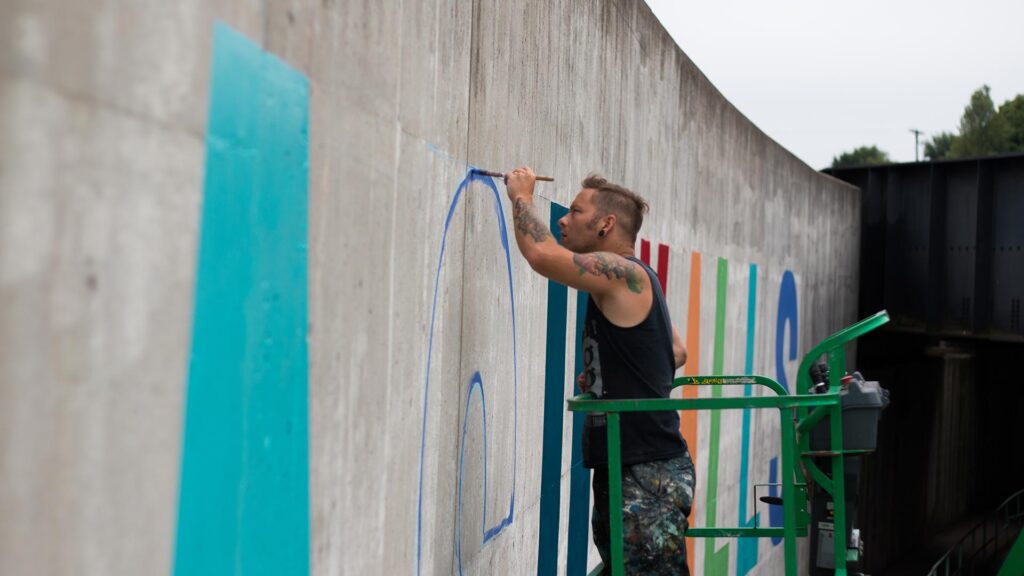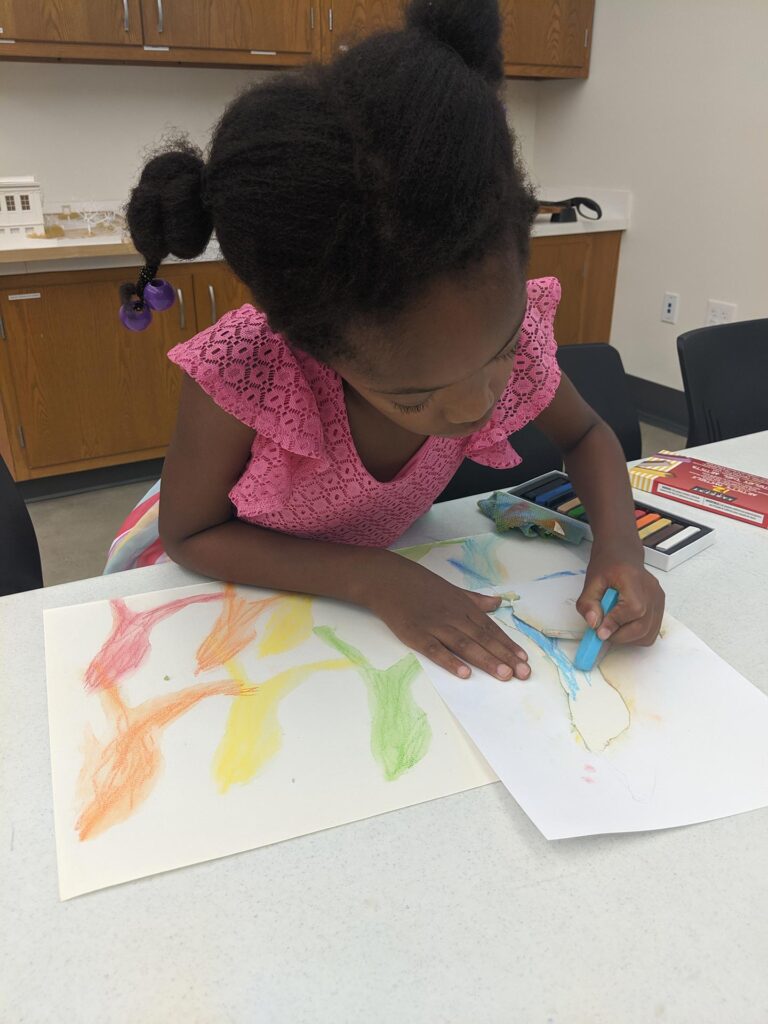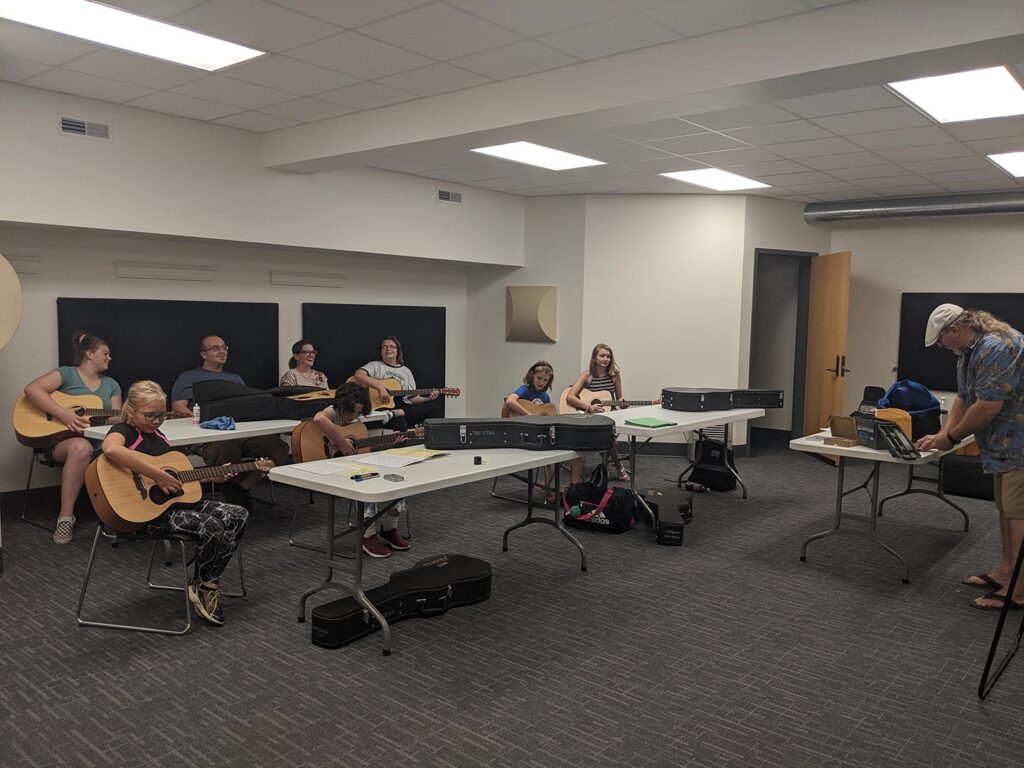BY CINDY GERLACH
PHOTOS PROVIDED BY TIPPECANOE ARTS FEDERATION
“Grow the arts”
It’s a simple motto — and one the Tippecanoe Arts Federation undertakes with the utmost gusto.
The Tippecanoe Arts Federation (TAF) serves as a regional arts partner, one of 11 in the state. As the center of a 14-county district, TAF is the umbrella organization and helps advocate for these 14 counties, many of which are rural, providing educational opportunities in visual, literary and performing arts, outreach programs for underserved communities and underserved youth, and funding for operational expenses for fellow arts organizations in the region.

TAF dates back to 1976, when it was determined broader support for the arts locally was needed, says Tetia Lee, TAF’s executive director. In its nascent period, TAF was actually just an arts calendar, a way to list everything that was happening in one place.
“It was a way to support other arts organizations,” Lee says.
As its mission and vision grew, the organization changed accordingly, supporting various types of programming. TAF found its home at the Wells Memorial Library, just north of downtown on North Street; at the time, the library was transitioning out of the building.
The current board has adopted the simple mission statement — “It’s something short and sweet that the board members can remember,” says Lee.
“We work within that mission,” she says. “We’re allowed to be creative, to think outside the box.”
“We can play to the resources in the community really well,” says Ann Fields Monical, TAF’s chief operating officer.
The Regional Arts Partnership is a network of 11 regions throughout the state. Under the purview of the Indiana Arts Commission, the regional partners work to enhance the delivery of arts services and to move the decision-making closer to the community and its arts consumers. Region 4, the largest geographically, serves a population of more than 525,000 and has served in this capacity since 1997.
And it’s a huge undertaking. With such a large geographic area, needs are widely variant, Lee says.
“Rural counties’ needs are so much different than organizations in Tippecanoe County,” she says.

The work focuses on engagement, education and sustainability. TAF helps groups assess their needs. But how those are addressed changes.
Because, says Lee, every community benefits from the vitality of the arts. Whether it’s arts education, public art displays or performances that draw in tourism, the arts are vital to the survival of a community.
TAF has more than 200 arts partners. These member organizations use TAF as their hub, as these are often small groups with no physical home — or the resources to have one — so TAF provides them with meeting space, a mailing address and help with marketing and publicity.
“The majority of our organizations are smaller, with budgets less than $25,000 who are looking to expand,” Lee says.
Member organizations range from large groups such as the Lafayette Symphony, Carnahan Hall or the Indiana Fiddlers’ Gathering, to much smaller, more obscure groups and many individuals. Even a group of fly fishermen.
“That doesn’t sound like the arts,” says Monical. “But they make these beautiful lures.
“That tells you how much stuff is going on. So many different groups.”
One of the ways TAF is looking to the future is by the remodeling and expansion of its physical space. The nearly century-old Wells Community Cultural Center had been showing signs of age. So TAF undertook a major restoration project — a project that was handled very deliberately and thoughtfully. The timing had to be right in terms of financing the project and finding public support. It was a process that took nearly a dozen years.
The result is a stunning interior renovation of the old library. The stacks were removed to reveal an entire back wall of windows, opening up the space, allowing for a much-needed smaller performance venue, as well as updated gallery space and staff offices.

The building’s footprint remains unchanged. But every inch of the building has been renovated, with the lower-level rooms being given the same treatment, with a full overhaul. Each of the four rooms has been redesigned with a distinct purpose — a dance studio, arts studio, recording studio, meeting room — yet each can be used for multiple purposes, to create, interact and learn. The smallest meeting room was given a wall of glass to make it feel less claustrophobic.
The state-of-the-art recording studio is a major coup. Funded by a grant issued to the Songwriters Association of Mid-North Indiana, the studio will serve as a teaching tool for both recording artists and engineers; it also will be a space for people to record projects, from interviews to podcasts to spoken word performances. It will open up opportunities for education and collaboration within the songwriting and recording community.
The final touch to the building was when the stolen outdoor lights were returned. The bronze lights, stolen last summer and sold for scrap, were reconstructed, Monical says. A mold was found to recreate a missing part, and the lights were completed and returned to their rightful home in front of the building, albeit with tighter security, in December.
Having more space is key to the future of TAF, Lee says. As the renovations progress — this was Phase I of a three-phase project — it will live in the space and evaluate how it works before progressing to the next steps.
“We hope to expand,” says Lee. “What that looks like is changing.”

Each year, TAF hosts its annual fundraiser, The Taste of Tippecanoe, which brings arts together with tastings from area restaurants. It shows off the best of the area, from food to visual art to performances of all kinds.
TAF is instrumental in getting art to the people in the communities it serves. Currently, it oversees a variety of programs, including:
- The after-school arts program, with classes for kids in elementary up through high school
- Visiting artist program, which reaches underserved communities
- An instrument lending program, providing students with musical instruments, allowing them to join band or orchestra
- Gallery space for art exhibits
- Sponsoring gallery walks, which open up nearly 30 downtown Lafayette galleries
- Wabash Walls, a public art initiative to rebuild and beautify the Wabash Avenue neighborhood, one of Lafayette’s oldest
- Mural Art Initiative, a collaborative educational outreach program that serves at-risk or underserved youth, helping to beautify community areas and promote the benefit of public art installations in the community.
As the umbrella organization, TAF has a broad mission and goals, as they help advocate for the benefit of public arts, for education. Every day, Lee says, they live that motto of “Grow the Arts” — in all the glorious ambiguity that wording allows.


